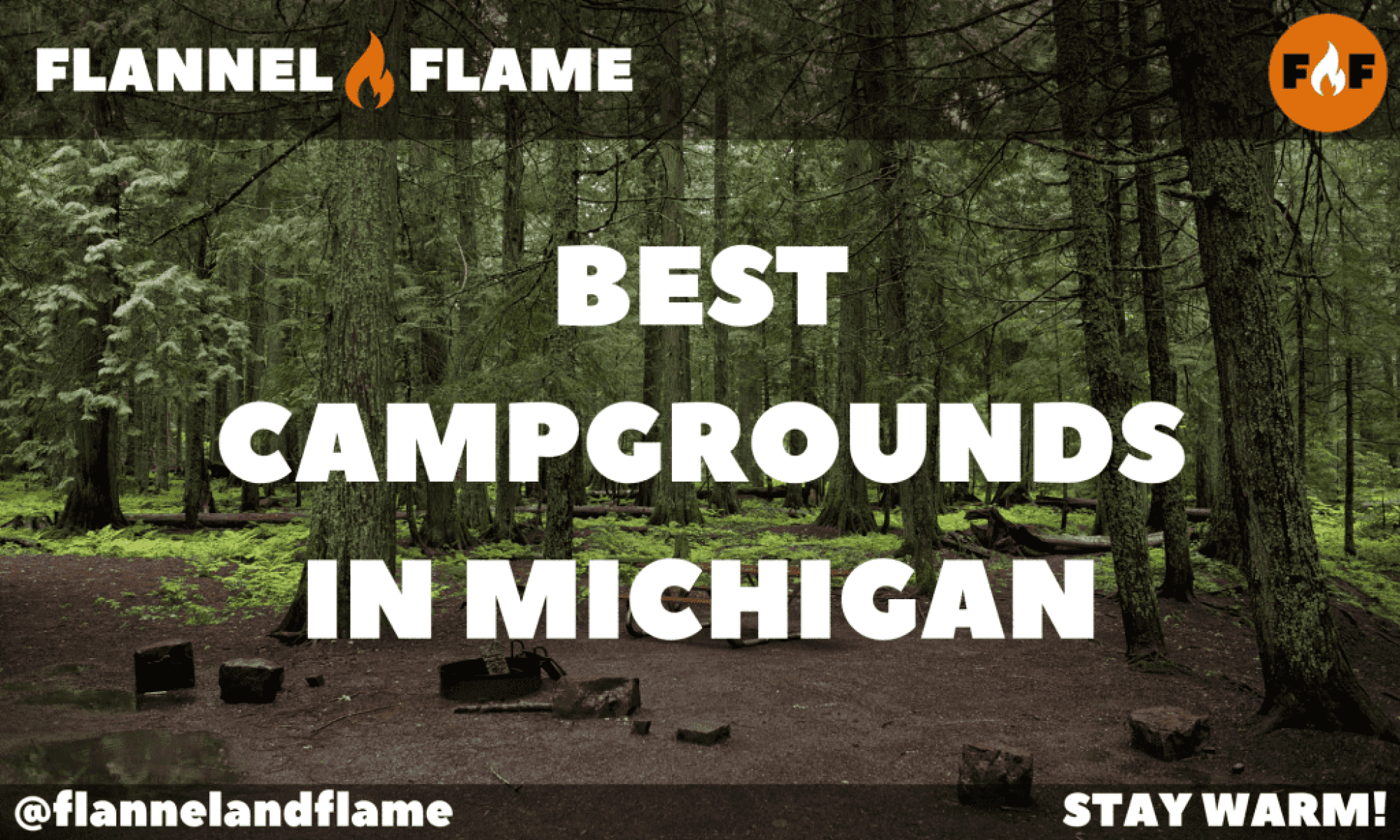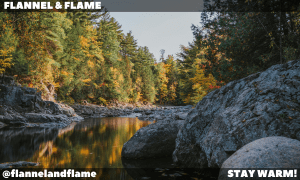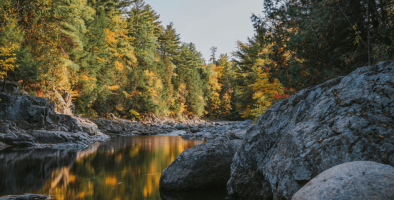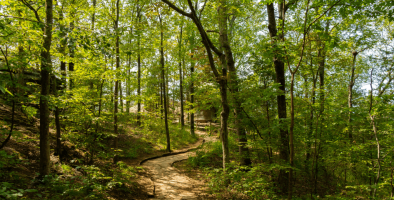Best Campgrounds in Michigan
Michigan offers some of the most diverse camping experiences in the Midwest, if not the entire country. Surrounded by four of the five Great Lakes and dotted with more than 11,000 inland lakes, the state provides countless opportunities to camp along pristine shorelines. Beyond the water, Michigan boasts vast forests, rolling dunes, and rugged wilderness areas that create perfect backdrops for outdoor adventures. This guide highlights the most exceptional campgrounds across both peninsulas, from the popular beaches of the Lower Peninsula to the remote wilderness of the Upper Peninsula, helping you discover the perfect base for your next Michigan adventure.
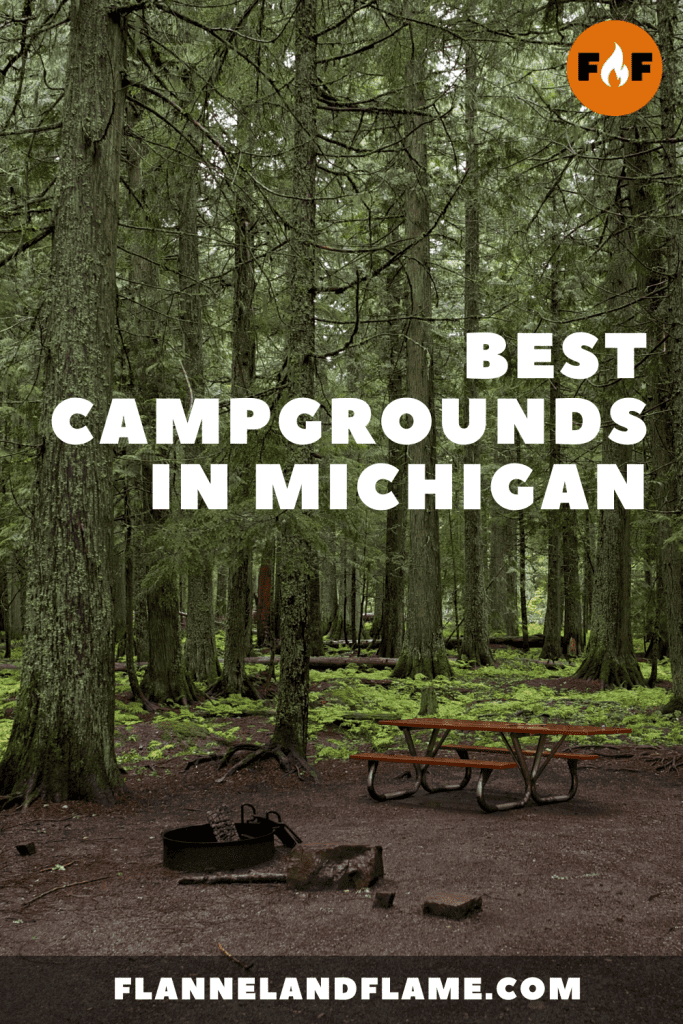
Sleeping Bear Dunes National Lakeshore – D.H. Day Campground
Campsites: 88 (first-come, first-served only)
Reservations: No reservations – arrive early
Address: 8010 W Harbor Hwy, Glen Arbor, MI 49636
Nestled between towering sand dunes and the crystal-clear waters of Lake Michigan, D.H. Day Campground captures the essence of what makes Michigan’s western shoreline so magical. The campground sits within Sleeping Bear Dunes National Lakeshore—voted “The Most Beautiful Place in America” by Good Morning America viewers—where massive sand mountains rise up to 450 feet above the shimmering blue waters of Lake Michigan.
The 88 rustic sites at D.H. Day are arranged in a pleasing crescent that follows the natural contours of an old beech-maple forest. Tall hardwoods create a dappled canopy overhead, while gaps in the trees reveal glimpses of the massive dunes that give the park its name. The campground’s proximity to Lake Michigan means the soothing sound of waves often carries through the trees, especially at night when other sounds diminish.
What makes D.H. Day truly special is its location at the intersection of so many natural wonders. A short walk through the woods brings campers to a perfect crescent beach where Caribbean-blue water stretches to the horizon. The beach remains relatively uncrowded compared to other Lake Michigan destinations, creating the feeling of having discovered a secret paradise.
Morning light filtering through the trees creates ethereal scenes as mist often rises from the ground after cool nights. Birdsong fills the air as numerous species take advantage of the diverse habitat where forest meets shoreline. The scent of pine mingles with the fresh lake breeze, creating an olfactory experience unique to this special place.
Beyond the immediate campground, adventures await in every direction. The famous Dune Climb challenges visitors to scale a massive sand mountain that rewards the effort with panoramic views across forests, lakes, and islands. The Pierce Stocking Scenic Drive provides access to overlooks perched 450 feet above Lake Michigan, where the view stretches so far that the earth’s curvature becomes visible on clear days.
As evening approaches, D.H. Day becomes a front-row seat for what many consider Michigan’s best sunset viewing. The western exposure across Lake Michigan creates perfect conditions as the sun sinks below the horizon in a display of color that typically elicits spontaneous applause from gathered beach-goers. Later, with minimal light pollution, the stars emerge in spectacular fashion above the silhouettes of ancient dunes.
Pictured Rocks National Lakeshore – Twelvemile Beach Campground
Campsites: 36
Reservations: Recreation.gov
Address: Alger County Road H-58, Grand Marais, MI 49839
Along Michigan’s Upper Peninsula, where Lake Superior crashes against dramatic multicolored cliffs, Twelvemile Beach Campground offers an immersive experience in one of the state’s most photogenic landscapes. This campground within Pictured Rocks National Lakeshore sits atop a bluff overlooking a seemingly endless sandy beach, where the world’s largest freshwater lake stretches to the horizon.
The 36 sites are arranged along a single loop road that winds through a mixed forest of white birch, hemlock, and pine. Most sites are nestled among the trees, creating natural privacy screens between neighbors, while some offer filtered views of Lake Superior through the foliage. The campground’s relatively small size creates an intimate atmosphere where the sounds of nature—wind through birch leaves and waves against the shore—dominate the soundscape.
What distinguishes Twelvemile Beach is its direct access to an expansive stretch of pristine Lake Superior shoreline. A short trail leads from the campground down wooden stairs to the beach, where fine golden sand extends in both directions as far as the eye can see. Though the name suggests a twelve-mile beach, the sandy shore actually continues uninterrupted for nearly fifteen miles along the lakeshore.
Morning at Twelvemile often brings a mystical quality as fog frequently forms over the cold waters of Lake Superior. As the sun rises, it gradually burns through the mist, revealing the extraordinary clarity of the water. Despite the lake’s reputation for frigid temperatures, shallow areas near shore can warm enough for swimming during summer months, though most visitors prefer beachcombing for agates and unique rocks polished by the lake’s powerful forces.
The campground serves as an ideal base for exploring the wonders of Pictured Rocks. The famous cliffs—where mineral-stained sandstone creates a natural canvas of red, orange, blue, green, and brown patterns—lie just a few miles west. The North Country Trail runs directly through the campground, offering hiking options from easy beach strolls to challenging day hikes along clifftops with vertigo-inducing views.
As day transitions to evening, Lake Superior often displays its mercurial nature with water that shifts from turquoise to deep blue to silver as light conditions change. Sunsets cast warm hues across the expansive horizon, while the night sky—far from urban light pollution—reveals stars with remarkable clarity, sometimes complemented by the shimmering curtains of the northern lights during active periods.
Tahquamenon Falls State Park – Lower Falls Campground
Campsites: 188
Reservations: Michigan Department of Natural Resources
Address: 41382 W M-123, Paradise, MI 49768
Deep in Michigan’s eastern Upper Peninsula, where centuries-old forests blanket the landscape and tannin-stained waters flow toward Lake Superior, Tahquamenon Falls State Park protects one of the Midwest’s most impressive waterfall systems. The Lower Falls Campground places visitors within walking distance of the unique series of cascades that give the park its name and fame.
The campground’s 188 sites spread across three distinct areas, each with its own character. The Hemlock Loop offers deeply shaded sites under a mature forest canopy, while the Portage Loop provides more open, sunny locations. The riverfront sites in the Portage Loop are particularly prized for their views of the tannin-rich Tahquamenon River flowing past, its water the color of root beer due to natural compounds leached from cedar swamps upstream.
Dawn in the campground brings a chorus of bird songs echoing through the forest, while mist often rises from the river, creating an atmosphere that feels primeval. The scent of pine and cedar hangs in the air, while the distant sound of rushing water serves as a constant reminder of the nearby falls.
What makes this campground exceptional is its proximity to the Lower Tahquamenon Falls—a series of five cascades flowing around a small island, creating a scene that seems more like something from a fantasy novel than reality. A short trail leads from the campground to viewing platforms, while a rowboat rental concession allows visitors to cross to the island for up-close exploration of the multiple cascades.
Beyond the Lower Falls, the park offers extensive recreational opportunities. Four miles upstream lies the Upper Tahquamenon Falls—Michigan’s largest waterfall, where up to 50,000 gallons of water per second pour over a 200-foot-wide brink with a 50-foot drop. The amber-colored water creates a distinctive appearance that has made this one of the most photographed natural features in the Midwest.
Miles of hiking trails wind through old-growth forest, where massive white pines that escaped the logging era still tower overhead. The habitat supports abundant wildlife—black bears, moose, wolves, and eagles all make their home in this remote region, though most remain elusive except to the most patient observers.
Evening at the campground brings cooling temperatures as the forest settles into night rhythms. The rushing sound of the falls seems to intensify as other noises diminish, creating the perfect natural white noise for sleep. With minimal light pollution, the stars emerge with exceptional clarity, occasionally complemented by the northern lights that dance across the northern sky.
Porcupine Mountains Wilderness State Park – Presque Isle Campground
Campsites: 50
Reservations: Michigan Department of Natural Resources
Address: 33303 Headquarters Rd, Ontonagon, MI 49953
In Michigan’s far western Upper Peninsula, where ancient mountains meet the world’s largest freshwater lake, the Porcupine Mountains rise like the spine of a sleeping giant above Lake Superior’s shoreline. At the western edge of this 60,000-acre wilderness—the largest tract of old-growth northern hardwood forest in North America—Presque Isle Campground offers an immersive experience at the intersection of mountain and lake environments.
The campground’s 50 sites occupy a narrow strip of land between Lake Superior and the Presque Isle River as it completes its journey from the highland interior. Sites are arranged to maximize both privacy and proximity to the water, with many offering direct views of Lake Superior’s seemingly endless blue horizon. The setting creates a sense of being perched at the edge of the world, with nothing but open water stretching northward for hundreds of miles.
Morning often brings mist rising from the lake’s surface as cool air passes over relatively warmer water. Waves provide a constant soundtrack—sometimes a gentle lapping against the rocky shore, other times a thunderous crashing during storms that sweep across Superior with surprising power. The air carries a distinctive freshness found only around large bodies of water, mixed with the earthy scents of the adjacent forest.
What distinguishes this campground is its access to the extraordinary features at the mouth of the Presque Isle River. Just steps from camp, a series of wooden walkways and platforms provide views of the river’s final cascades as it tumbles through a series of potholes and over dark basalt outcrops before merging with Lake Superior. The river has carved fantastical shapes into the ancient volcanic rock, creating scenes that photographers return to capture in different seasons and light conditions.
Beyond the immediate river area, the campground serves as a gateway to the wilderness of the Porcupine Mountains. Hiking trails lead eastward into the park’s interior, climbing gradually to the Lake of the Clouds—a breathtaking overlook where a long, narrow lake fills a valley between forested ridges. The park’s 35,000 acres of old-growth forest harbor massive sugar maples, yellow birch, and hemlock trees that have been growing undisturbed for centuries.
As evening settles over Lake Superior, the western sky often ignites with color as the sun sinks toward Wisconsin’s distant shore. After dark, the remote location creates ideal conditions for stargazing, with the Milky Way often clearly visible stretching across the sky. During periods of solar activity, the northern lights may dance above the darkened waters, creating reflections that double the visual spectacle.
Ludington State Park – Beechwood Campground
Campsites: 147
Reservations: Michigan Department of Natural Resources
Address: 8800 W M-116, Ludington, MI 49431
Sandwiched between the clear waters of Lake Michigan and the smaller Hamlin Lake, Ludington State Park encompasses nearly 5,300 acres of diverse coastal ecosystems. The park’s crown jewel for camping enthusiasts is Beechwood Campground, where spacious sites nestle among mature hardwoods just a short walk from one of Michigan’s finest swimming beaches.
The campground’s 147 sites are thoughtfully arranged to provide privacy while fostering a welcoming community atmosphere. Most sites enjoy ample shade from the tall beech and maple trees that give the campground its name, while the forest floor remains open and park-like, making navigation between sites easy. The campground combines convenience—with modern restrooms and shower facilities—with a genuine sense of being immersed in nature.
Morning light filtering through the tree canopy creates dappled patterns across tents and picnic tables as campers awaken to birdsong and the distant sound of Lake Michigan waves. The air carries a unique blend of freshwater scents mingled with the earthiness of the forest, creating an olfactory experience distinctive to Michigan’s western shore.
What makes Ludington truly exceptional is the incredible diversity of recreational opportunities accessible directly from camp. A short walk leads to a perfect swimming beach where golden sand stretches for miles along Lake Michigan’s shoreline. The warm, shallow waters of Hamlin Lake offer ideal conditions for paddling and fishing, with canoe and kayak rentals available within the park.
For hikers, over 21 miles of trails wind through shifting sand dunes, dense forests, and wetland areas. The park’s signature hike follows the shore to Big Sable Point Lighthouse, where the 112-foot black-and-white tower has guided mariners since 1867. Along the way, trails cross remarkable dune ecosystems where hardy plants anchor shifting sands, creating ever-changing landscapes shaped by wind and water.
Wildlife viewing opportunities abound throughout the park. Whitetail deer frequently pass through the campground, especially in morning and evening hours. The forests and wetlands support countless bird species, while patient observers might spot river otters playing in the channel between the two lakes or beavers maintaining their lodge in a quiet backwater.
As day transitions to evening, the western exposure provides front-row seats to spectacular Lake Michigan sunsets. After dark, the campground’s position away from major urban areas allows for excellent stargazing, with the summer Milky Way clearly visible overhead on moonless nights. The rhythmic sound of waves continues through the night, providing nature’s perfect white noise for sleeping.
Wilderness State Park – Lakeshore Campground
Campsites: 250
Reservations: Michigan Department of Natural Resources
Address: 903 Wilderness Park Dr, Carp Lake, MI 49718
At Michigan’s northwestern tip, where Lake Michigan meets Lake Huron, Wilderness State Park protects 10,500 acres of pristine shoreline, wetlands, and forests. Within this wild landscape, Lakeshore Campground lives up to its name by offering sites with unparalleled access to more than two miles of perfect beach along the Straits of Mackinac.
The campground’s 250 sites are arranged in loops that follow the natural contours of ancient beach ridges running parallel to the shoreline. Sites range from open and sunny to deeply shaded by white cedar, birch, and pine. What unites them is proximity to the spectacular coastline, where the blue-green waters of Lake Michigan stretch toward distant horizons marked by passing freighters and the silhouette of Mackinac Bridge.
Dawn at Wilderness brings a special magic as first light illuminates the eastern sky across the water. The air carries a distinctive freshness unique to these northern waters, while morning mist sometimes creates ethereal scenes as it drifts across the landscape. Shorebirds probe the wet sand for breakfast while campers emerge from tents to witness another perfect sunrise over the Straits.
What distinguishes this campground is its remarkable shoreline—a two-mile stretch of pristine beach where cobblestones near the water transition to fine sand perfect for barefoot walks. The shoreline faces northeast, providing views of both sunrises and sunsets during summer months when the sun’s path arcs across the northern sky. The shallow waters warm relatively quickly in summer, creating inviting swimming conditions along the protected beach.
Beyond the beach, the park offers extensive exploration opportunities across diverse ecosystems. Hiking trails wind through cedar swamps where rare orchids bloom in spring, across open meadows dotted with wildflowers in summer, and through hardwood forests that blaze with color in autumn. Designated dark sky viewing areas provide optimal conditions for stargazing and northern lights observation.
Wildlife abounds throughout the park. Bald eagles patrol the shoreline, while secretive bobcats leave occasional tracks along remote trails. The park contains Michigan’s largest designated wilderness area and serves as critical habitat for numerous rare plants and animals, including the federally endangered Piping Plover that sometimes nests along the undisturbed beaches.
As daylight fades, the park’s remote location ensures spectacular stargazing opportunities. With minimal light pollution, the Milky Way appears as a bright band stretched across the night sky. During periods of solar activity, the northern lights often dance above the lake, their colors doubled as they reflect off the water’s surface in a display that camping photographers travel hundreds of miles to capture.
South Higgins Lake State Park
Campsites: 400
Reservations: Michigan Department of Natural Resources
Address: 106 State Park Dr, Roscommon, MI 48653
In the heart of Michigan’s Lower Peninsula, South Higgins Lake State Park provides access to one of the state’s most beautiful inland lakes. Renowned for its extraordinary water clarity and striking blue color, Higgins Lake consistently ranks among the world’s most beautiful lakes—a reputation immediately apparent to anyone who visits its sandy shores.
The park’s 400 campsites spread across multiple loops, creating distinct neighborhoods within the larger campground. Sites range from sunny open areas perfect for solar charging to deeply shaded retreats beneath tall pines. The campground strikes an ideal balance between natural beauty and modern amenities, with clean facilities and well-maintained grounds throughout.
Morning often begins with mist rising from the lake’s surface as the day’s first light illuminates a landscape awakening with activity. The scent of pine mingles with campfire smoke from breakfast preparations, while chickadees and nuthatches flit between trees, unafraid of human neighbors. The short walk to the lakeshore reveals water so clear that individual stones are visible on the lake bottom even in relatively deep areas.
What makes South Higgins Lake exceptional is the remarkable quality of the lake itself. Spring-fed and deep (with maximum depths reaching 135 feet), the lake maintains cool, crystal-clear water throughout summer. The park’s sandy beach extends for nearly a mile along the southern shore, providing ample space for sunbathing, swimming, and sandcastle building even during busy holiday weekends.
For water enthusiasts, Higgins Lake represents paradise. The clarity makes it perfect for snorkeling along drop-offs where underwater landscapes unfold in vivid detail. Anglers prize the cold, deep waters for lake trout, perch, and pike. Sailors and paddlers enjoy exploring the lake’s 10,300-acre surface, where conditions can range from mirror-calm mornings to exciting whitecaps when afternoon breezes develop.
The surrounding forest offers welcome shade during hot summer days, with hiking trails winding through mature stands of white pine, oak, and maple. Wildlife sightings are common, with deer, foxes, and countless bird species making their home in and around the park. The habitat diversity—from shallow marshy areas to deep water, from open beach to dense forest—creates numerous ecological niches supporting a wide range of species.
As evening approaches, the west-facing beach becomes the perfect vantage point for watching the sun sink toward the treeline, casting golden light across the lake’s surface. After dark, the relatively remote location allows for good stargazing, while the gentle lapping of waves against the shore creates nature’s perfect lullaby for tired campers.
Warren Dunes State Park
Campsites: 220
Reservations: Michigan Department of Natural Resources
Address: 12032 Red Arrow Hwy, Sawyer, MI 49125
Along Michigan’s southwestern shoreline, where massive sand mountains rise more than 200 feet above Lake Michigan, Warren Dunes State Park combines spectacular dune landscapes with one of the state’s most popular beaches. The park’s campground provides the perfect base for exploring this dynamic environment where wind and water constantly reshape the landscape.
The campground’s 220 sites are arranged across three main loops nestled in a mature forest of oak, maple, and pine just behind the primary dune ridge. This position creates a microclimate where the dunes block lake breezes, resulting in sites that stay notably warmer than the beach area—a welcome feature during cool spring and fall nights. The forest canopy provides dappled shade across most sites, while the sandy soil ensures excellent drainage even after heavy rains.
Mornings often begin with birdsong as numerous species take advantage of the diverse habitat where forest meets dune. The short walk from campground to beach reveals the dramatic scale of the dunes, with the aptly named “Tower Hill” rising 240 feet above lake level. The panoramic views from its summit reward those willing to make the steep climb through loose sand, revealing miles of coastline and, on clear days, the distant Chicago skyline across the lake.
What distinguishes Warren Dunes is the remarkable interplay between the massive dune system and the three miles of pristine beach. Unlike many dune areas that restrict off-trail exploration, Warren Dunes allows visitors to fully experience the dune environment—climbing the steep faces, running down slopes, and discovering the unique plants adapted to this harsh, shifting environment.
The beach itself stretches wide and sandy, with plenty of room even during summer weekends when visitors flock to its shores. Lake Michigan’s waters typically warm to comfortable swimming temperatures by late June, creating perfect conditions that last through September. Sunset brings a particularly magical quality as the low-angle light accents the curves and ridges of the dunes while painting the sky in spectacular colors.
For those seeking different adventures, the park offers miles of hiking trails winding through less-visited areas where oak forests transition to unique dune ecosystems. Wildlife abounds throughout the property, with foxes, coyotes, and deer leaving tracks in the sand overnight, telling stories of their nocturnal journeys across this dynamic landscape.
As evening settles over Lake Michigan, the beach often remains warm from the day’s sun, creating perfect conditions for stargazing after sunset. The western exposure provides unobstructed views as the sun sinks below the horizon in a final display of color before stars emerge above the darkened water.
Final Thoughts About Camping in Michigan
From the spectacular dune landscapes along Lake Michigan to the pristine wilderness of the Upper Peninsula, Michigan’s campgrounds offer incredible diversity for outdoor enthusiasts. Whether you’re watching the northern lights dance above Lake Superior, hiking through ancient forests, or relaxing on sandy beaches, the state’s well-maintained campgrounds provide perfect bases for exploration and adventure. Each location showcases a different facet of Michigan’s natural beauty, from quiet inland lakes to thundering waterfalls, from massive sand dunes to rocky shorelines. Pack your camping gear and discover why Michigan remains one of America’s premier destinations for creating lasting outdoor memories.
Other States to Explore
More from Flannel & Flame…
- Mexican Bean SaladBold, zesty, and bursting with color, this Mexican Bean Salad is a side dish that brings the flavor anywhere you roam. A hearty mix of black, kidney, and cannellini beans comes together with crisp bell peppers, sweet corn, and red onion, all tossed in a citrusy vinaigrette loaded with fresh cilantro and just the right… Read more: Mexican Bean Salad
- Cheesy PotatoesGolden, gooey, and loaded with flavor, these Dutch Oven Cheesy Potatoes are a campfire favorite that never disappoints. Tender hash browns are layered with melted cheese, savory seasonings, and just the right amount of smoky goodness from the fire. Baked slow and steady in a Dutch oven, this comforting side dish is perfect alongside grilled… Read more: Cheesy Potatoes
- Alternatives to S’Mores: Sweet Twists and Campfire Treats You’ll CraveThere’s something undeniably magical about a gooey s’more melting between your fingers under a starlit sky. The way the chocolate gets just soft enough, the marshmallow smolders to a golden hue (or charred to a crisp, if that’s your thing), and the graham crackers give that perfect crunch — it’s the taste of summer, nostalgia,… Read more: Alternatives to S’Mores: Sweet Twists and Campfire Treats You’ll Crave
- Best Hiking in New YorkWilderness, waterfalls, and wonder from the Catskills to the Adirondacks New York might be synonymous with skyscrapers, yellow cabs, and a certain iconic skyline—but trust me, beyond the hustle of the city, the Empire State hides some of the most jaw-dropping trails in the Northeast. We’re talking misty mountaintops, mossy forests, gorges carved by ancient… Read more: Best Hiking in New York

